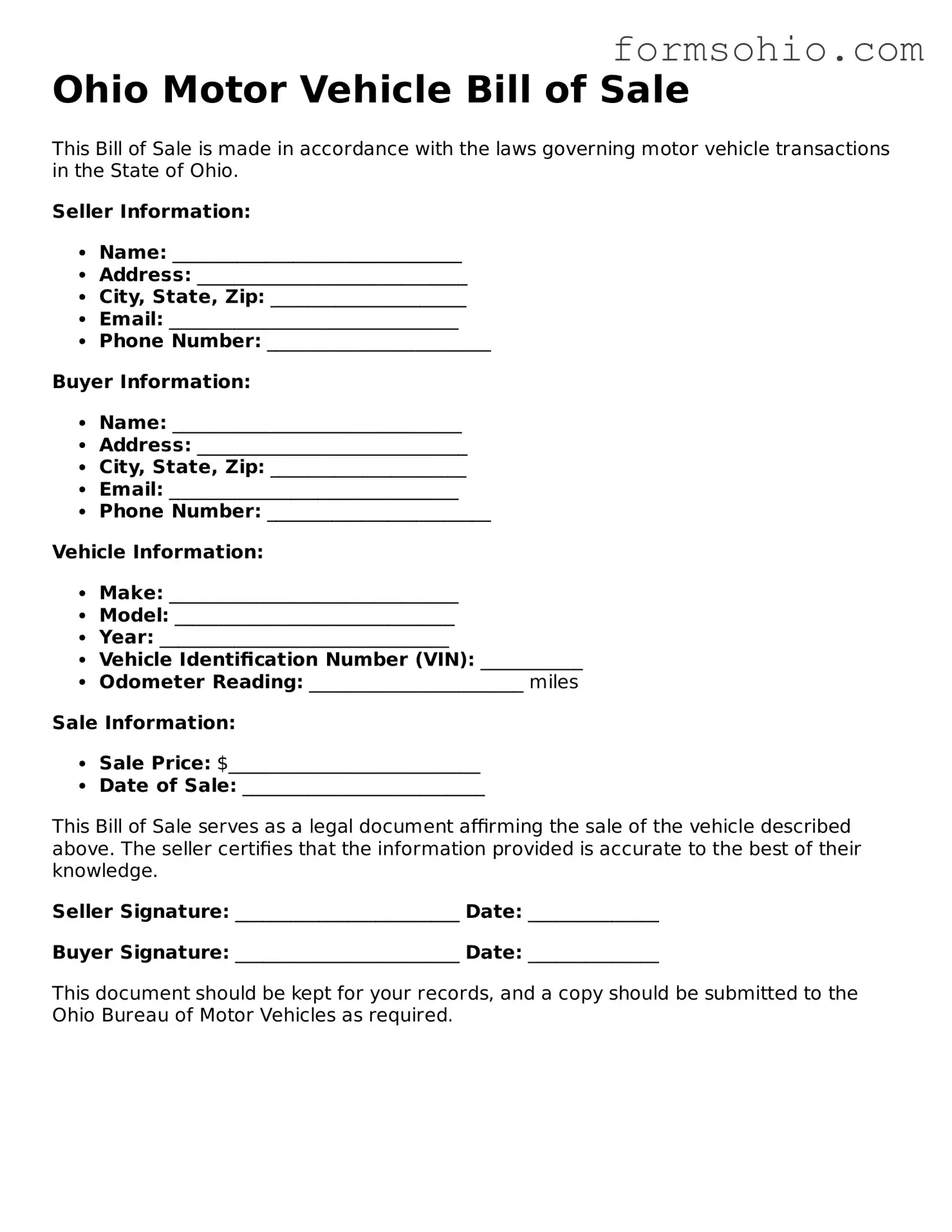Ohio Motor Vehicle Bill of Sale
This Bill of Sale is made in accordance with the laws governing motor vehicle transactions in the State of Ohio.
Seller Information:
- Name: _______________________________
- Address: _____________________________
- City, State, Zip: _____________________
- Email: _______________________________
- Phone Number: ________________________
Buyer Information:
- Name: _______________________________
- Address: _____________________________
- City, State, Zip: _____________________
- Email: _______________________________
- Phone Number: ________________________
Vehicle Information:
- Make: _______________________________
- Model: ______________________________
- Year: _______________________________
- Vehicle Identification Number (VIN): ___________
- Odometer Reading: _______________________ miles
Sale Information:
- Sale Price: $___________________________
- Date of Sale: __________________________
This Bill of Sale serves as a legal document affirming the sale of the vehicle described above. The seller certifies that the information provided is accurate to the best of their knowledge.
Seller Signature: ________________________ Date: ______________
Buyer Signature: ________________________ Date: ______________
This document should be kept for your records, and a copy should be submitted to the Ohio Bureau of Motor Vehicles as required.
